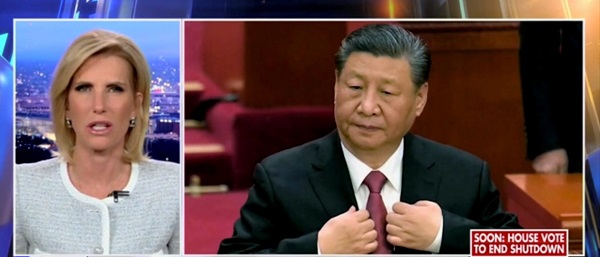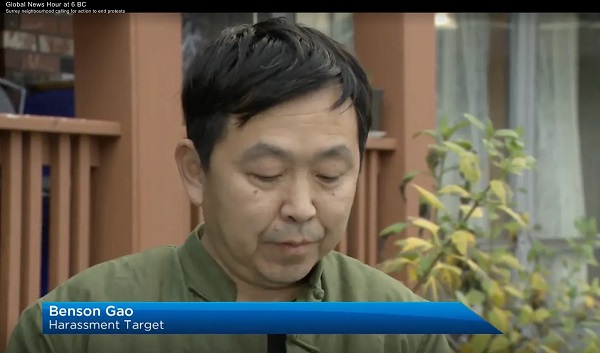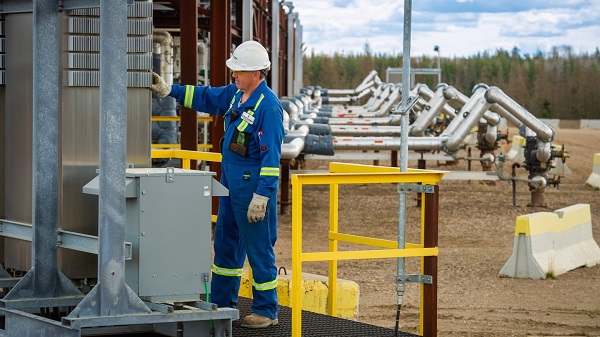Opinion
Red Deer’s population grew by 195 since 2015

2019 RED DEER MUNICIPAL CENSUS = 101,002
2016 RED DEER MUNICIPAL CENSUS= 99,832
2015 RED DEER MUNICIPAL CENSUS= 100,807
In the four years since 2015 Red Deer has grown by 195 residents or less than 0.2% in 4 years.
Timberlands grew from 1834 residents in 2015 to 3038 residents in 2019 or 1204 residents, for a growth of about 66% so where did we lose all our residents? Let us look at the neighbourhoods north of the river.
Residents living north of the river in 2015=32,005, 2016=31,228 and finally 2019= 30,576 for a total decline of 1,429 residents.
Let us break it down;
……YEAR………..2019.…………….2016.……………..2015
Kentwood-………….4235.……………4267.……………..4299
Glendale………..….4284.……………4288.……………..4430
Normandeau……….3275.……………3530.……………..3603
Pines……………..…1725.……………..1718.……………..1851
Highland Green……3896.…………….3920.……………4065
Oriole Park…………5200.…………..…5244.…………….5300
Riverside Meadows..3423.…………….3686.…………….3810
Fairview…………….733.………………710.……………..761
Johnstone…………..3805.……………..3865.…………….3886
Total……………….30,576.…………31,228.……………32,005
So it looks like we just relocated residents from north of the river to new subdivisions like Timberlands. In an age where we are trying to limit our footprint Red Deer expanded our footprint faster than our population growth demanded. New neighbourhoods require infrastructure ($), schools ($), sewers ($), water ($), roads ($), transit ($) etc.
30,000 plus people live north of the river down from 32,000 plus 4 years ago, but still a large community. I wrote about this very topic in 2016 and was given the brush off by many in city hall. One city councillor suggested that I have more children to populate the north side.
The issue was not taken seriously in 2016 and again in 2019.
I wrote that Lethbridge would overtake us and become the 3rd largest city in Alberta, and they did.
I dove deeper to see what was happening in local neighbourhoods and found that the north side of the river is being decimated and annexing or new neighbourhoods are fuelling our growth.
People keep telling me it is the provincial economy that is preventing growth. Lacombe grew by 7% last year, Blackfalds has seen record growth, Penhold, Sylvan Lake and the county grew in the same province, so I discount that theory.
My thinking is perhaps more closer to home. The other communities invested in their residents. New recreation complexes that required per capita investments that dwarf Red Deer’s by huge margins, up to 100s of percents.
Red Deer has neglected the residents north of the river. For every dollar they spend north of the river they spend 20 south of the river. No high school north of the river with 4 current and 2 planned, south of the river.
If the city could just bring their culture from 1980 to 2020 then maybe we will not lose so many residents from north of the river. It is time to stop neglecting the residents living north of the river.
Start investing in substantial recreational facilities north of the river after years of building so many south of the river. Build the next aquatic centre north of the river, build the next school, especially high school north of the river.
For the whole city the powers that be need to wake up, and invest in it’s residents. It has been said that insanity is doing the same thing over and over again and expecting different results. It is time to wake up, what the powers that be have been doing has not worked, the census proves it, it is time to do things differently.
No I am not having more children, councillor.

Daily Caller
Laura Ingraham’s Viral Clash With Trump Prompts Her To Tell Real Reasons China Sends Students To US


From the Daily Caller News Foundation
On Monday, Ingraham pressed Trump on why a plan to admit 600,000 Chinese nationals into U.S. universities qualifies as a “pro-MAGA” move, challenging him directly after he defended the influx as vital to maintaining Washington’s relationship with Beijing. During a Wednesday broadcast, Ingraham said no modern president has fought harder for American workers than Trump and predicted he will “honor that distinction for the next three years.”
“There was also more consternation over the approach to allowing Chinese and other foreign students to take spots at U.S. universities. A lot of MAGA folks didn’t like that at all. And it’s not, by the way, as some Chinese influencers today said on X, I love this, it’s not that the MAGA folks, certainly not myself, dislike the Chinese people. It’s ridiculous,” Ingraham said.
“What they dislike is the Chinese system that represses Chinese people and uses them as human spies and saboteurs. Remember, when the CCP greenlights hundreds of thousands of their people to come study here, they’re not sending them so they can learn about the wonders of Western civilization, Plato and Socrates, Greek history, become champions of individual freedom and take that message back home. They’re sent here to do whatever is necessary to learn how to push the People’s Republic closer to crushing America, to stealing from us, and for spying on us,” Ingraham added.
Ingraham said that people “understandably perplexed by some of the president’s comments, we cannot forget, what American president has ever been tougher on China than Donald Trump? None.”
Ingraham told viewers that Beijing does not send its students to America to study the Western canon or return home as advocates of individual liberty.
WATCH:
Ingraham warned that China’s rise didn’t happen overnight, saying that decades of inattentive presidents allowed Beijing to gain the strength Trump now must confront.
“Given China’s growing strength that’s been amassed over decades of presidents who were out to lunch, President Trump inherited the most challenging situation,” Ingraham said. “I don’t think it’s an exaggeration to say this, that any president has faced in the last 50 years. He and his entire team are dedicated to countering the Chinese aggression that’s building.”
Washington and Beijing struck a deal in June clearing the way for Chinese nationals to enroll in American universities, a shift that followed the administration’s June 5 move blocking Harvard from bringing in additional international students. Officials justified the restriction by pointing to security vulnerabilities and rising campus turmoil, including allegations of antisemitic activity, as reasons to tighten the flow of foreign applicants.
Trump acknowledged at the time that admitting large numbers of students from a country controlled by the Chinese Communist Party carries real intelligence concerns, saying in June that the government “must be vigilant” about who enters U.S. classrooms. National security experts told the Daily Caller News Foundation that the policy could create openings for the CCP to exploit America’s higher-education system and potentially endanger U.S. interests.
armed forces
Canadian veteran says she knows at least 20 service members who were offered euthanasia

From LifeSiteNews
Canadian Armed Forces veteran Kelsi Sheren told members of the House of Commons that he has proof of veterans being offered assisted suicide.
Canada’s liberal euthanasia laws have made the practice so commonplace that a Canadian Armed Forces (CAF) veteran has said she knows and has “proof” that no less than 20 of her colleagues were offered unsolicited state-sponsored euthanasia.
Kelsi Sheren, who is a CAF veteran, recently told MPs in the House of Commons veterans affairs committee that “over 20 veterans have confirmed being offered MAID.”
“I have the proof, and I have proof of more,” Sheren told the committee during an October 28 meeting.
Conservative MP Blake Richards asked Sheren if she was willing to provide them with evidence to affirm her allegations.
Sheren noted how the 20 veterans have given written testimonies, or actual audio recordings, of when they were offered what in Canada is known as Medical Assistance in Dying (MAiD).
“We also have other individuals who are too afraid to come forward because Veterans Affairs has threatened their benefits,” she told MPs, adding that some other veterans were even offered non-disclosure agreements along with “payouts if they were to take it.”
Veterans Affairs Canada (VAC) has told the media its “employees have no role or mandate to recommend or raise (MAid). ”
As reported by LifeSiteNews, this is not the first time reports of CAF veterans saying they were offered MAiD.
Indeed, as reported by LifeSiteNews, it was revealed last year that the federal department in charge of helping Canadian veterans appears to have purposefully prevented the existence of a paper after scandalous reports surfaced alleging that caseworkers had recommended euthanasia to suffering service members.
LifeSiteNews recently published a report noting how a Canadian combat veteran and artillery gunner revealed, while speaking on a podcast with Dr. Jordan Peterson, that the drugs used in MAiD essentially waterboard a person to death. Assisted suicide was legalized by the Liberal government of former Prime Minister Justin Trudeau in 2016.
A new EPC report has revealed that Canada has euthanized 90,000 people since 2016.
As reported by LifeSiteNews last week, a Conservative MP’s private member’s bill that, if passed, would ban euthanasia for people with mental illness received the full support of the Euthanasia Prevention Coalition (EPC).
-

 armed forces2 days ago
armed forces2 days agoIt’s time for Canada to remember, the heroes of Kapyong
-

 Digital ID2 days ago
Digital ID2 days agoCanada moves forward with digital identification for federal benefits seekers
-

 Daily Caller2 days ago
Daily Caller2 days agoUS Nuclear Bomber Fleet Shares Fence With Trailer Park Linked To Chinese Intel-Tied Fraudster
-

 Alberta2 days ago
Alberta2 days agoSchool defunding petition in Alberta is a warning to parents
-

 Daily Caller2 days ago
Daily Caller2 days agoLaura Ingraham Presses Trump On Allowing Flood Of Chinese Students Into US
-

 espionage2 days ago
espionage2 days agoChinese-Owned Trailer Park Beside U.S. Stealth Bomber Base Linked to Alleged Vancouver Repression Case
-

 Business2 days ago
Business2 days agoLiberals refuse to disclose the amount of taxpayer dollars headed to LGBT projects in foreign countries
-

 Crime1 day ago
Crime1 day agoCBSA Bust Uncovers Mexican Cartel Network in Montreal High-Rise, Moving Hundreds Across Canada-U.S. Border







